The Kitsune have arrived in force in the Jwar Isles. Kota, a lone Kitsune operated for many years before being joined by her den-brother Kyuubi and now, the full force of the Kitsune has arrived to restore balance. They wish to restore everything to its natural order and anything that deviates from its path or intention is targeted for elimination.
We’ve been covering Bushido for years, so if you’d like to learn more about the game, check out our guide to Bushido Risen Sun, our review of the Bushido Risen Sun 2-player starter set, and our “Start Collecting” guide to Bushido, which includes an interview with the game’s developer. In this article, we’ll have a look at the new Kitsune starter set for Bushido Risen Sun and exclusively reveal 2 new Kitsune miniatures.
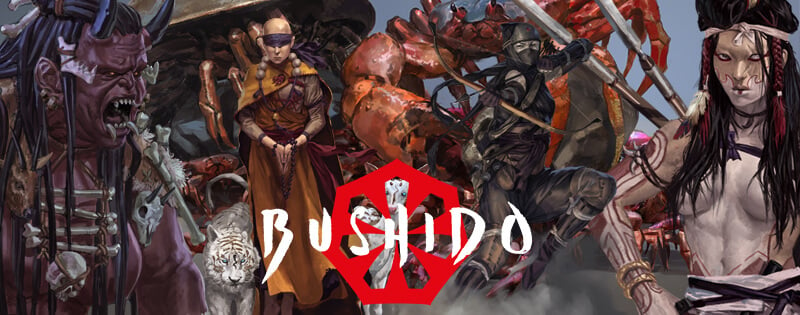
What Is Bushido Risen Sun?
Bushido is a skirmish wargame in a fantasy feudal Japanese setting, the Jwar Isles. Here different factions battle for supremacy, including warrior clans, pirates, martial artists, mythical creatures, and dark forces of horrifying creatures. Bushido is made by GCT Studios and the current edition is called Risen Sun.
There are 2 core mechanics that make Bushido an interesting and tactical skirmish game. The first is the activation system. Units have three stages of activation: Unactivated, Tired, and Exhausted. When a unit activates, it can complete either a simple or a complex action. A simple action makes an Unactivated unit Tired, or a Tired unit Exhausted. A complex action makes an Unactivated unit Exhausted.
This gives you some flexibility in terms of how you control your units, and you don’t need to complete all of a single unit’s activations in one go. This means that you can activate a unit to simple action move, then your opponent activates a unit and you can then either activate the same unit again to simple action move or attack, or a completely different unit.
If a unit is attacked in melee combat, they take an action to defend themselves, with exhausted units suffering a modifier to their rolls. This means that you can swarm heroes and hard-hitting units with lesser units, soaking up their activations and making them exhausted before you move in for the kill with another unit.
The second core mechanic is the combat system. Combat in Bushido is risk/reward. When units engage in combat, both units attack and defend simultaneously. So even though your unit attacked, it can still be damaged by the defender. Each unit has a combat stat, which details the amount of dice rolled when they engage in combat. These dice can be split between attack and defense however you choose, and the highest roll for each has to beat your opponent’s roll to hit them and dodge their own attack.
For example, if we rolled 2 dice, 1 for attack and 1 for defense, and got a 3 on both dice. Our opponent would have to roll 3 or more to defend against our attack, and 3 or more to beat our defense. Ties are decided by whoever rolled the most dice for the encounter and if that is a draw, the active player. the player whose model is making the action wins.
Up to 2 additional dice rolled, that aren’t 1’s, can be used to add +1 to the dice roll. So 3 dice of 2, 3, and 4 in attack, would add +2 to the highest roll of 4 to make 6. If no dice are rolled for attack or defense, the roll is counted as 0. This dice mechanic means that you have to not only read your opponent’s intent but judge the odds for attacking. Do you go all-in for attack or defense, or spread the odds across both? It also makes attacking a risk, as you could fail to hit your opponent, but be dealt damage in return.
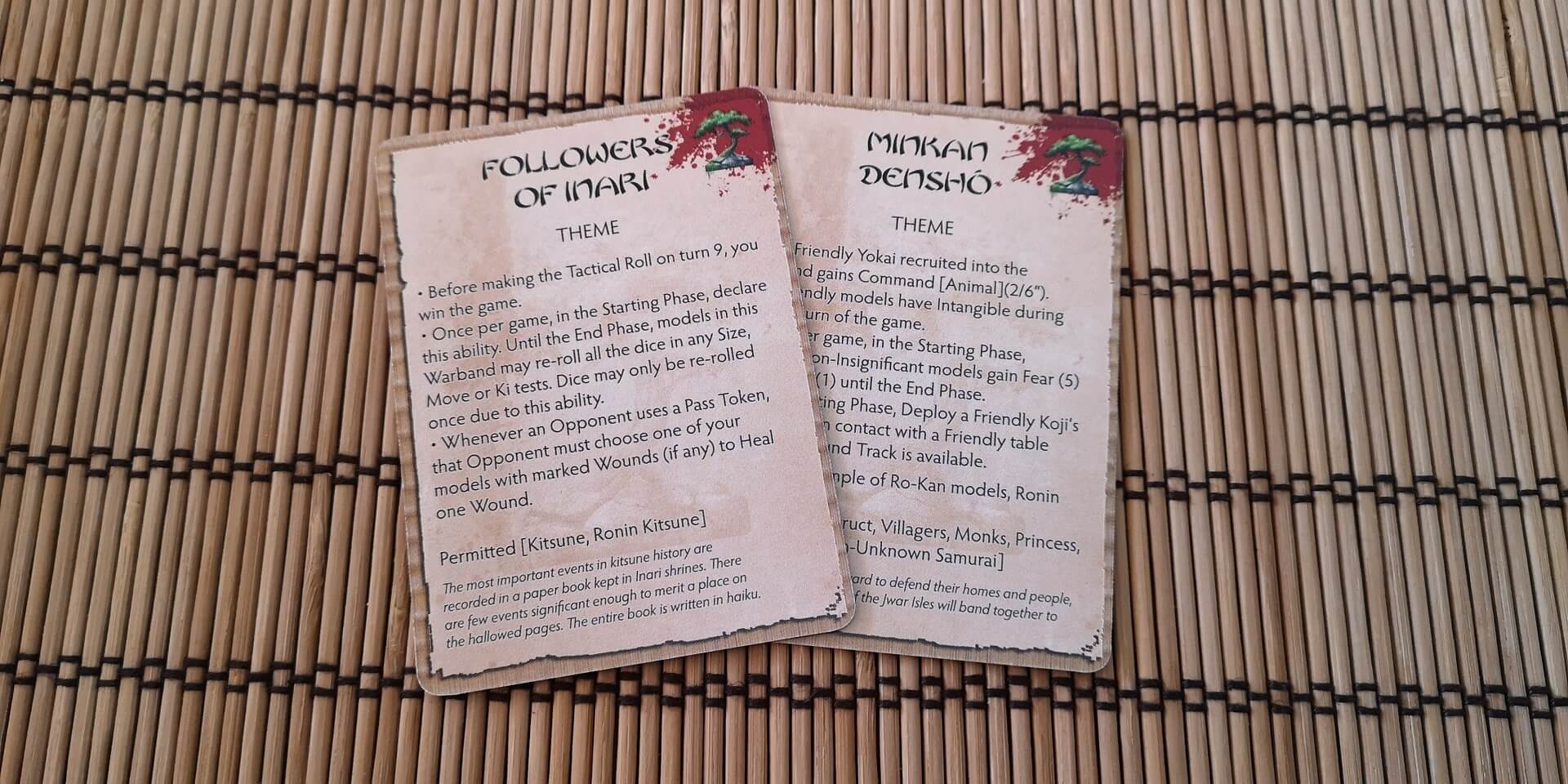
What’s a Themed List in Bushido?
When selecting a warband in Bushido, you must first choose a Faction from the 12 available. Each faction also has access to Theme cards, which offer special abilities, but restrict the units that can be included in the warband.
The Kitsune come from the Temple of Ro-Kan faction, and so can be included in any Temple of Ro-Kan warbands, or you can use a theme car like the Followers of Inari, which only allows Kitsune and Ronin Kitsune models, but gives you the ability to win the game at the start of Turn 9 (if the scenario goes on that long), along with rerolling all size, move, and ki tests in 1 turn per game and also healing a unit every time your opponent uses a pass token.
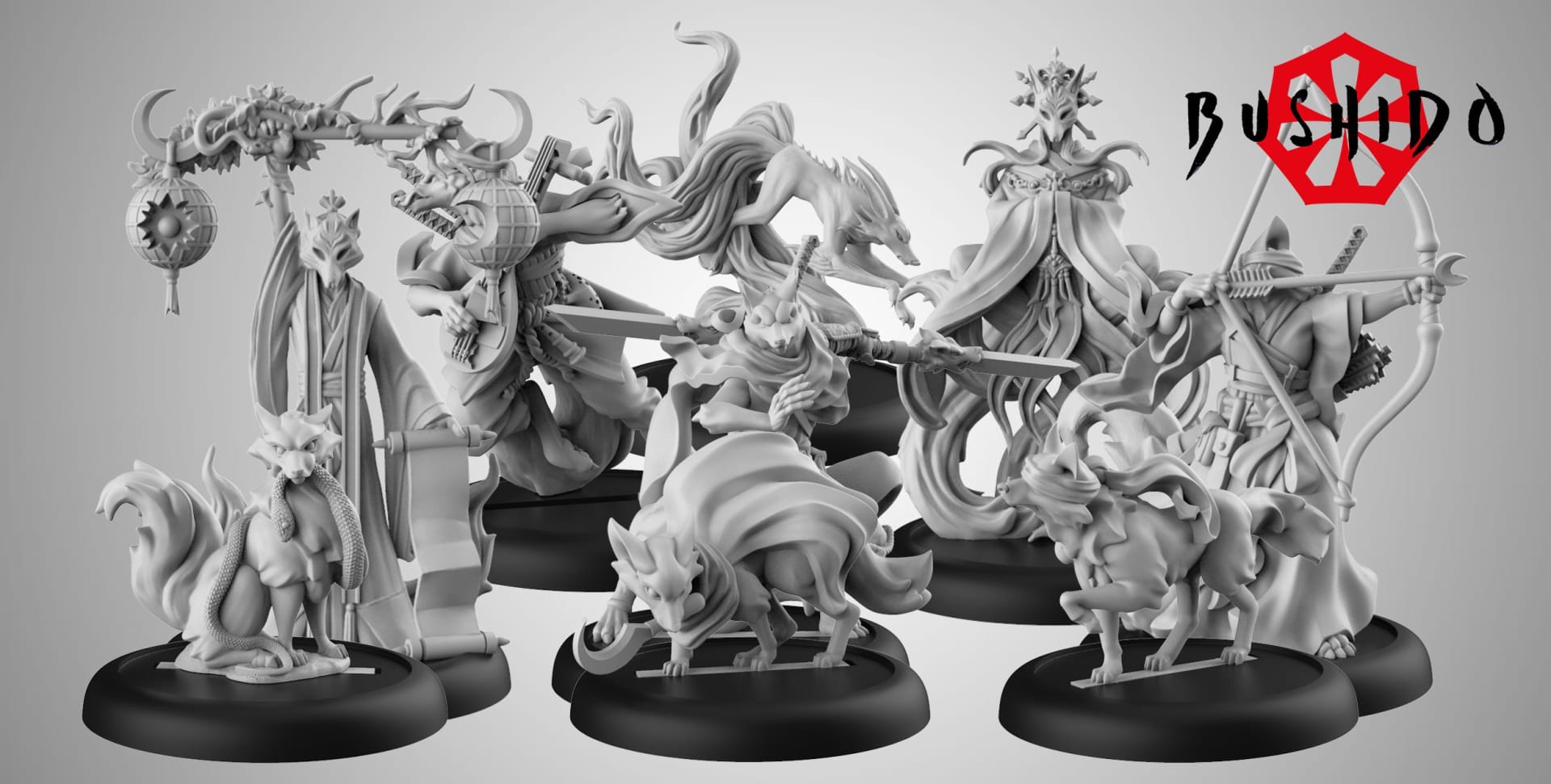
Who Are The Kitsune?
Tricksters of the spirit world? Mystical creatures, making life difficult for ordinary folk? Warriors against the darkness? Malevolent beasts of the night who commit heinous acts? Envoys of the gods of the forest and the fields? Harvesters of others’ sorrow and misfortune? Precisely who or what they are is moot, as they are now in Jwar dispensing their brand of bloody justice.
The Kitsune are a brand new themed box release for Bushido Risen Sun. They fall under the Temple of Ro-Kan faction, but much of the synergies and restrictions of some of the units in the box mean they work better when played together.
Why Play The Kitsune?
The Kitsune are tricksters and their theme card and lots of their options will keep your opponents on their toes with rerolls, fast movement, and some solid damage output. Some of their units can start in fox form to rush forward, changing into human form when required, and a couple can change back and forth in game.
The Kitsune also require you to monitor their resources, for their boosts and rerolls, as using them too early can leave you without options later in the game, but they can really pile the pressure on your opponent early game to get them on the back foot.
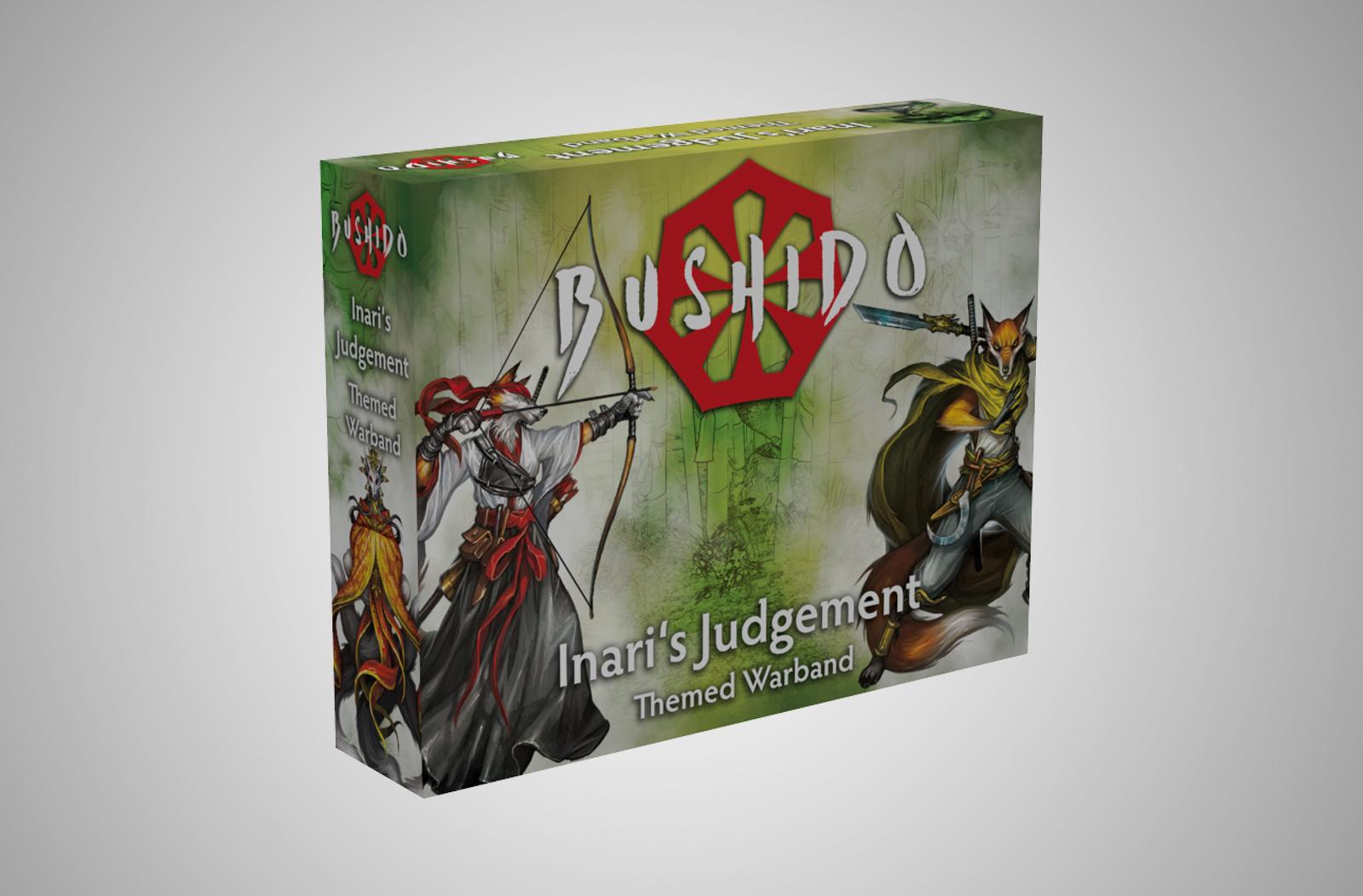
Where Should I Start With The Kitsune?
The best place to start with the Kitsune is with Inari’s Judgement themed box. It contains 9 miniatures for 6 units (3 of which have human and fox forms). It also has two theme cards and 10 other cards, most of which are restricted to the Followers of Inari theme, but some can be used by the Temple of Ro-Kan.
The units included in Inari’s Judgement are:
- Tengoku – The Kitsune Queen and a bit of a monster. She can only be included in the Followers of Inari theme and instantly allows all friendly Kitsune to have line of sight to any point that other friendly Kitsune have. Her Providence weapon has one of the highest strength bonuses in the game, her Majesty Ki ability can shut down your opponent’s aggressive maneuvers toward her, and her Seduction Ki ability can almost shut down enemy units.
- The White-Faced Fox (Human and Fox form) – The Kitsune archer starts in fox form to allow them to rush forward. When in human form, at the start of their activation, they can either walk 1 inch or gain intangible to get them out of any situation, and they also have Cloudwalk to position themselves perfectly for their shot during their turn. An effective archer with Assassin, they become even more deadly against Yokai, which includes most Kitsune.
- Kuoto (Human and Fox form) – The Judge of a subject’s deeds, this Kitsune starts in fox form to allow them to rush forward. Kuoto gives her targets the chance to repent for their sins and return to the correct path through a series of interesting Ki feats. Dhama forces them to complete a simple action of your choice when they next activate, Final Verdict gives your opponent the choice of a control marker, where you can take actions with them, or a death sentence marker, which improves attacks and damage against them, and Kannagara means that if the target declares anything other than the focus action, they gain a control marker.
- Takeru (Human and Fox form) – Takeru is one of the few Kitsune who can change between fox and human form repeatedly during the game, and she uses it to hunt the undead. She has Vengeance Soulless to boost her attack and damage against them but also gains Assassin while in a melee exchange with them. She blocks the use of Rise and Last Stand, always causes 1 wound against durable units and Kairai cannot be deployed within 9 inches when her Requiem Ki ability is used.
- Juko – Juko is a kami hunter, adept at taking them down and able to turn them back to the correct path. With his Rectifying Shomyo Ki Feat, Juko can remove a Kami and replace them with a friendly Kami. Units lose intangible when in base-to-base contact with Juko, and he also gains Assassin while in melee with Kami to partner with his Vengeance Kami trait.
- The Nine-Tailed Fox – An avatar of Inari himself, the Nine-Tailed Fox is a kami and starts with full Ki which is used for its wounds, and also to activate its Ki ability that gives rerolls to nearby friendly units. The Nine-Tailed Fox has the speed to get them where they need to be and can only be included in the Followers of Inari Theme.
What Products Are Available For The Kitsune And Where Should I Go Next?
Releasing alongside the Inari’s Judgement box, are 2 new Kitsune. Hofuku and Senshi and we can exclusively reveal their miniatures here.
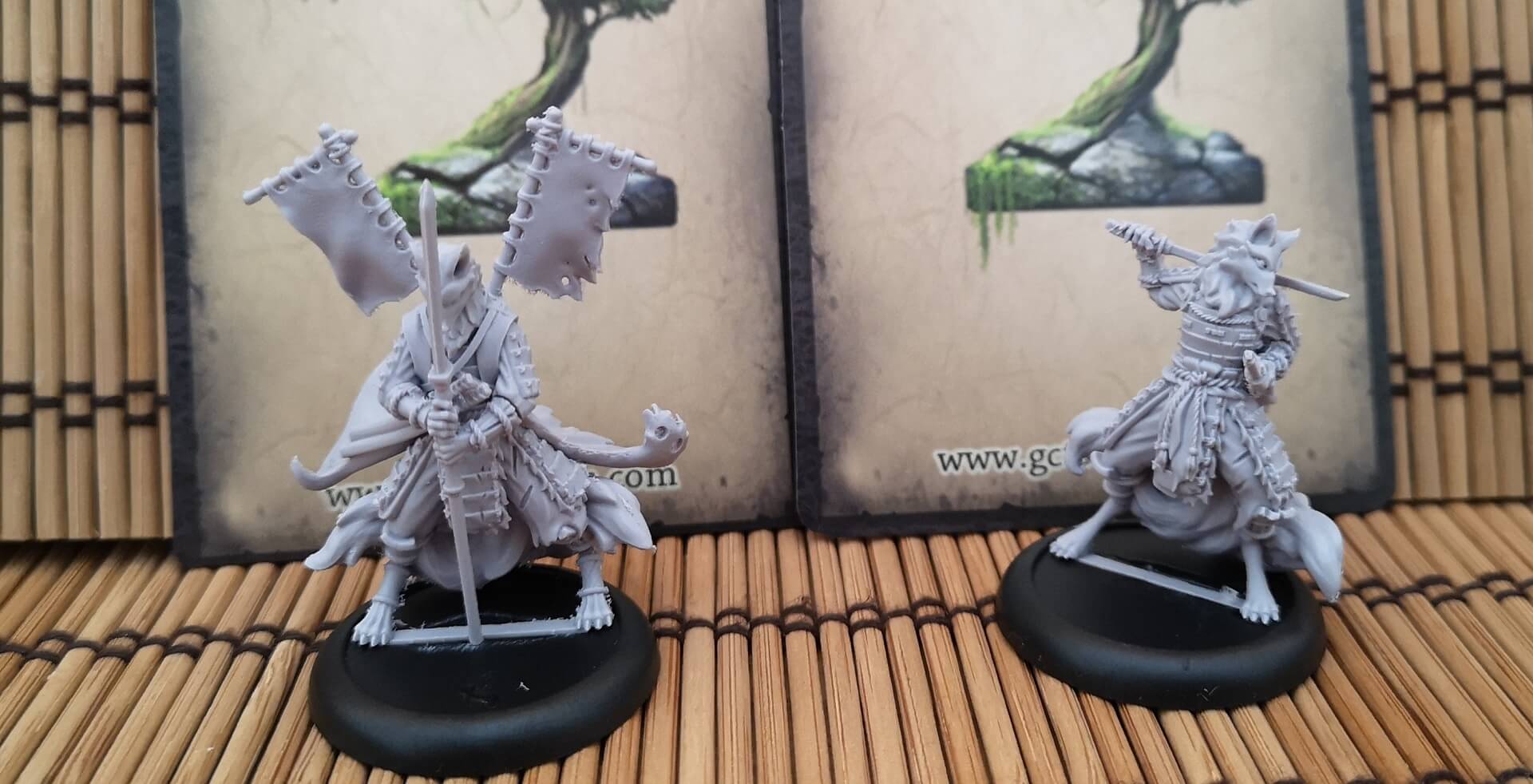
Hofuku is a warrior and has a weapon with 2 profiles, which both have reach, but the Mercy profile has +1 damage and Push Defence, whereas Execution has Powerful Attack and a variable damage output which is equal to the number of wounds marked on the target. Hofuku also comes with Vengeance Death Sentence, for tracking down those that Kuoto deems unworthy.

Senshi is another warrior, whose Daisho gets stronger as the game goes on. Senshi comes with the Bodyguard trait to help defend other Kitsune and a unique effect that allows them to be placed anywhere within 2 inches after an enemy effect moves or places them.
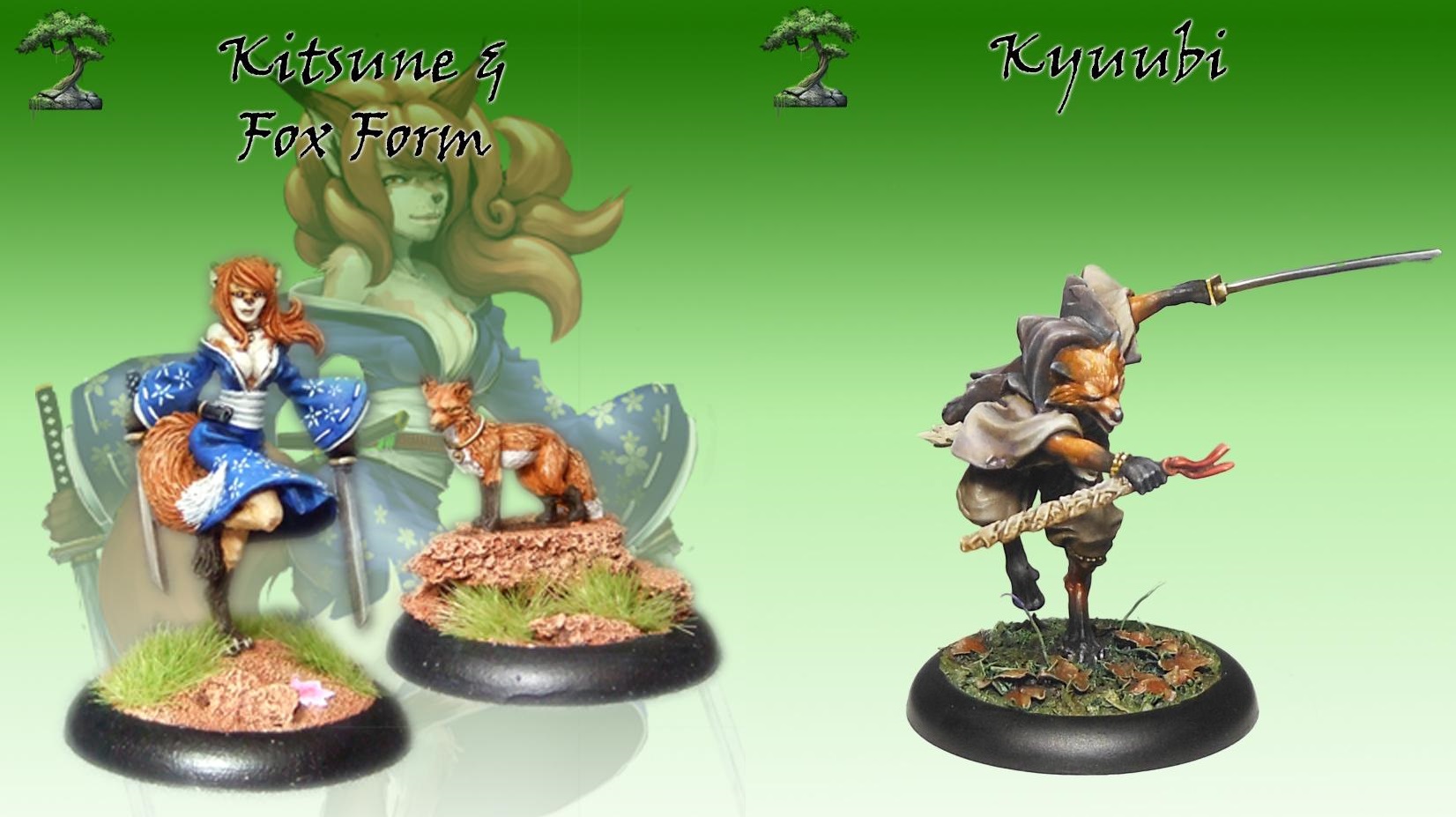
The 2 original Bushido Kitsune Kota and Kyuubi, also work extremely well in the faction and can be picked up already while you wait for Inari’s Judgement to be released.
The copies of the Bushido Risen Sun Kitsune Products used to produce this guide were provided by GCT Studios.
Bushido Risen Sun Kitsune Guide
Source: Pinay Guide Blog
Walang komento:
Mag-post ng isang Komento